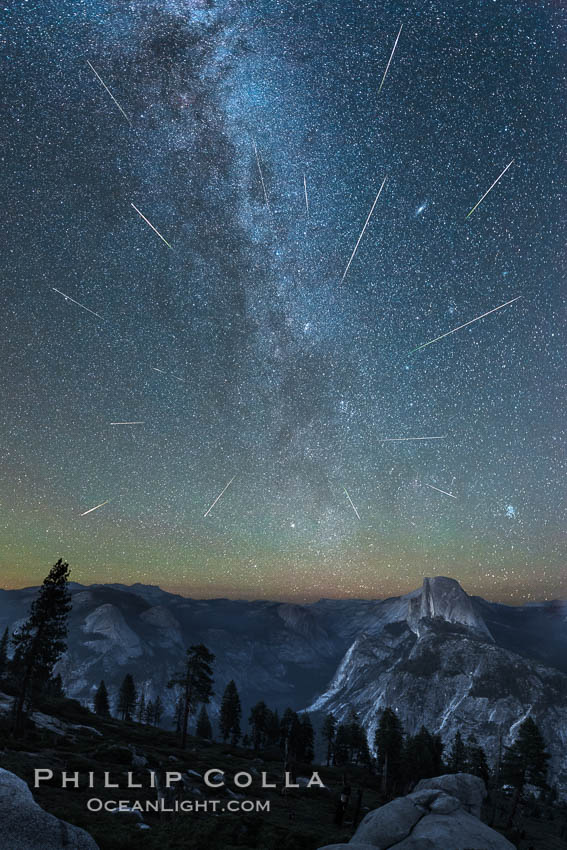Perseid Meteor Shower, Milky Way, Half Dome and Yosemite National Park
I spent two evenings at Glacier Point during the peak of the 2013 Perseid Meteor Shower, hoping to capture my first photographs of meteors. I have a few landscape astrophotography images that have chance meteors recorded in them, but this was to be my first attempt at photographing meteors as the principal subject. Conditions were nearly ideal. There were virtually no clouds on either night, little wind, and the air was dry and clear, perfect for astrophotography. This image is the result of those efforts, showing the Milky Way galaxy, about 16 meteors, Half Dome and Tenaya Valley and some of the Yosemite High Country in the distance, and the amphitheater at Glacier Point with a few people (and lights) enjoying the evening’s show.
Perseid Meteor Shower and Milky Way, Andromeda Galaxy and the Pleides Cluster, over Half Dome and Yosemite National Park
Image ID: 28746
Location: Glacier Point, Yosemite National Park, California, USA
As you might imagine, this image is a composite. The Milky Way was aligned above Half Dome in just this way during the mid-evening. Note that the Andromeda Galaxy can be seen as a oval blurry object just above and to the left of Half Dome and to the right of the Milky Way, and the Pleides star cluster is seen at the lower right of the sky, just above the horizon. The individual meteorites, however, came from separate images taken over the course of 12 hours of continuous photography. I selected the best exposed and brightest of the meteorites that I photographed, rotated them about Polaris (the North Star) as necessary to account for the fact that the night sky “rotates” above us all night long, and composited them with the baseline image of Half Dome and the Milky Way. A little green “air glow” is seen near the horizon, and some distant smog or haze is also seen as a brown horizontal layer just above the horizon in the distance.
The Perseid Meteor shower, which is considered to have the brightest meteors of all annual meteor showers, is named for the constellation Perseus from which they appear to emanate. Note that most of the meteors in this image appear to radiate from the lower portion of the Milky Way in this photograph — that’s where the constellation Perseus lies.




